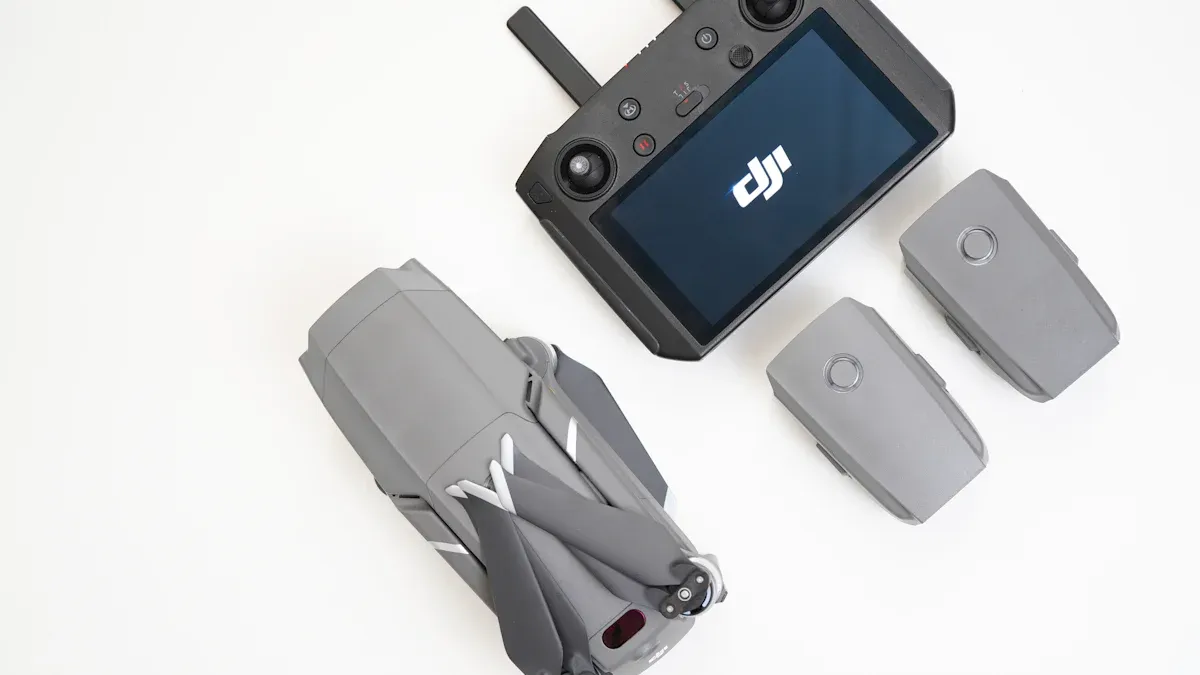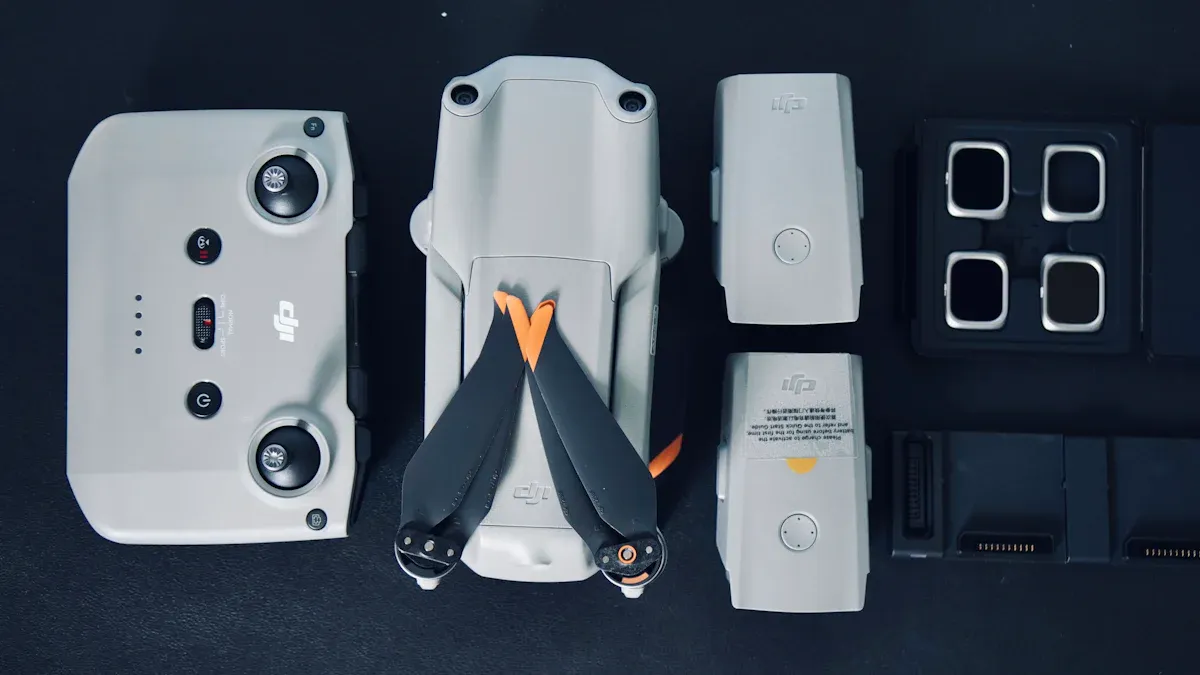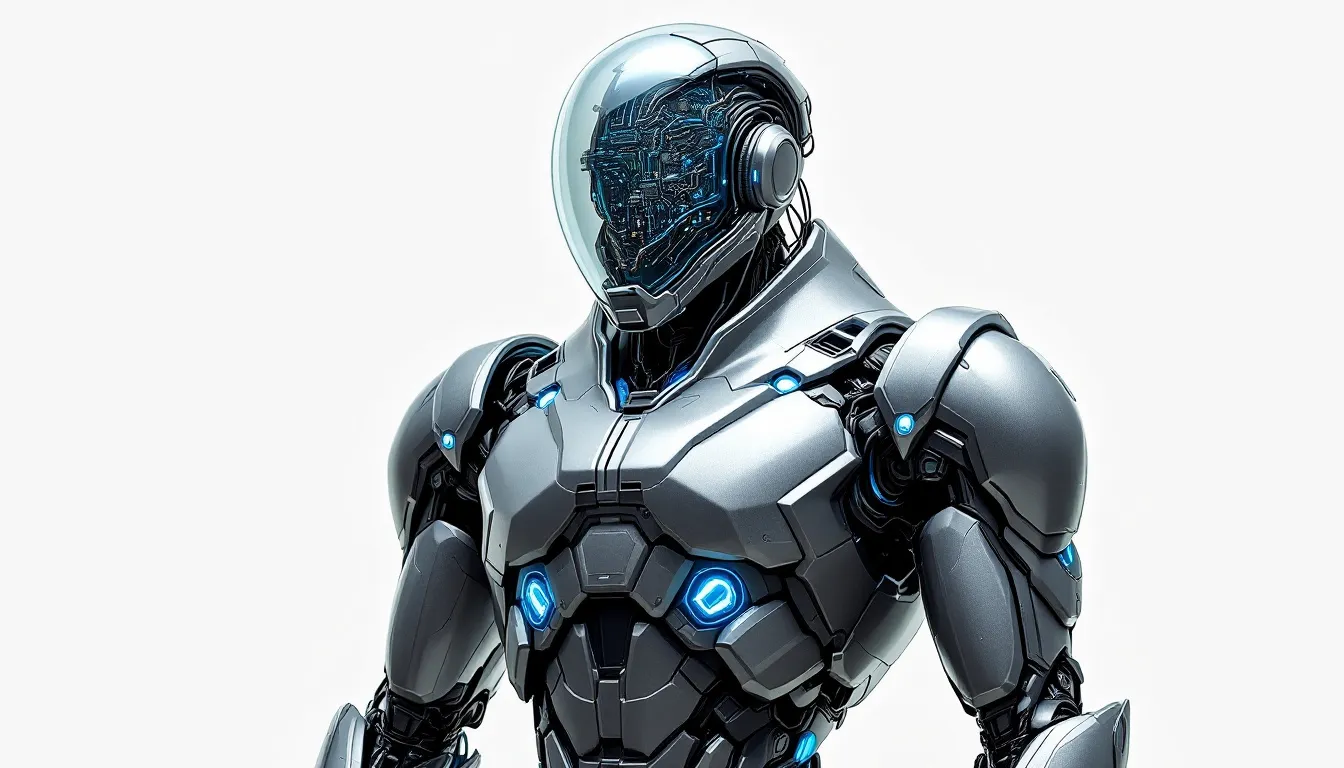Contents

When choosing a battery for drones, understanding the differences between Li-ion and LiPo batteries is essential. Li-ion batteries stand out as a long lasting battery for drone applications, offering 300-500 charge cycles on average. In contrast, LiPo batteries typically provide 150-300 charge cycles, making them less durable and requiring more frequent replacements. However, LiPo batteries excel in high-performance scenarios due to their lightweight design and high discharge rates, which are ideal for racing drones or other power-intensive uses.
Li-ion batteries are perfect for applications requiring longer runtimes and consistent power, such as photography drones or high-endurance missions. On the other hand, LiPo batteries are better suited for performance-oriented flights, where agility and power output matter most. Your choice depends on whether you prioritize longevity or performance for your drone.
Overview of Lithium Ion and Lithium Polymer Batteries
What Are Lithium Ion Batteries?
Structure and Energy Density
Lithium ion batteries, commonly referred to as Li-ion, are known for their advanced structure and high energy density. These batteries use a liquid electrolyte to facilitate the movement of lithium ions between the anode and cathode during charging and discharging. A separator prevents direct contact between these electrodes, ensuring safety and efficiency. The casing, often made of stainless steel or aluminum, provides durability and protects the internal components.
Li-ion batteries, including the popular 18650 li-ion batteries, offer a high energy density, making them ideal for drones requiring longer flight times. Their compact design allows for more energy storage in a smaller size, which is crucial for portable applications. This feature makes lithium-ion cylindrical cells a preferred choice for many drone enthusiasts.
Key Features of Li-ion
Li-ion batteries stand out due to their long lifespan and consistent performance. They typically last for 300-500 charge cycles, reducing the need for frequent replacements. Their high energy density ensures extended operation on a single charge, which is essential for photography drones or long-endurance missions. Additionally, their robust casing minimizes the risk of damage, making them reliable for various applications.
What Are Lithium Polymer Batteries?
Structure and Flexibility
Lithium polymer batteries, or LiPo, differ significantly in structure compared to lithium ion batteries. Instead of a liquid electrolyte, they use a polymer electrolyte, which allows for greater flexibility in design. These batteries are often housed in aluminum foil pouches, making them lightweight and adaptable. This unique structure enables lithium polymer pouch cells to be molded into various shapes and sizes, catering to innovative drone designs.
LiPo batteries are particularly beneficial for compact drones or custom builds. Their lightweight nature and flexibility make them suitable for high-performance scenarios where agility and power output are critical.
Key Features of LiPo
LiPo batteries excel in delivering high discharge rates, which is vital for racing drones or other power-intensive applications. They are also more cost-effective initially, as their simpler fabrication process reduces manufacturing costs. However, they require careful handling to avoid damage, as their aluminum foil casing is less robust than the metal casing of lithium ion batteries.
Li-ion vs LiPo: Key Differences
Energy Density and Weight
When comparing lithium ion and lithium polymer batteries, energy density plays a crucial role. Li-ion batteries offer a higher energy density, providing the highest capacity for the weight. This makes them ideal for drones that prioritize longer flight times. In contrast, LiPo batteries, while lighter, have slightly lower energy density but compensate with their adaptability and performance.
Feature | Li-ion | LiPo |
|---|---|---|
Energy Density | High energy density | Higher energy density due to pouch design |
Weight and Size | More compact and lighter | Bulkier and heavier for equivalent capacity |
Discharge Rate and Performance
LiPo batteries outperform lithium ion batteries in terms of discharge rate. Their ability to deliver power quickly makes them the go-to choice for high-performance drones. On the other hand, lithium ion batteries excel in efficiency, providing consistent power over extended periods. This makes them better suited for applications requiring steady energy output rather than bursts of power.
Metric | Li-ion Batteries | LiPo Batteries |
|---|---|---|
Flight Time | Longer due to higher energy density | Shorter, but better for high-intensity |
Efficiency | Superior energy storage efficiency | Excels in power delivery efficiency |
Thermal Management | Heats up less under load | Requires careful thermal management |
Lifespan of Li-ion and LiPo Batteries
Charge Cycle Comparison
Lifespan of Lithium Ion Batteries
Li-ion batteries are known for their long lifespan, making them a reliable choice for drone enthusiasts. These batteries typically offer a cycle life of 500 to 1,000 charge cycles. This means you can recharge them hundreds of times before their capacity significantly decreases. Their durability ensures consistent performance over extended periods, which is ideal for drones requiring frequent use.
Lifespan of Lithium Polymer Batteries
LiPo batteries, while excellent for high-performance applications, have a shorter cycle life compared to Li-ion batteries. They generally last for 300 to 500 charge cycles. This reduced lifespan means you may need to replace them more often, especially if you use your drone intensively. However, their lightweight design and high discharge rates make them indispensable for racing drones or other power-demanding scenarios.
Battery Type | Cycle Life (Charge Cycles) |
|---|---|
Li-ion | 500 to 1,000 |
LiPo | 300 to 500 |
Factors Impacting Longevity
Charging and Discharging Practices
How you charge and discharge your batteries plays a significant role in their longevity. To extend the life of both Li-ion and LiPo batteries:
Avoid temperature extremes, both high and low, during use or storage.
Minimize the time the battery spends at 100% or 0% charge.
Use standard chargers instead of fast chargers to reduce wear on the battery.
Keep batteries away from high-moisture environments to prevent damage.
By following these practices, you can maximize the cycle life of your batteries and ensure they deliver optimal performance for a long lifespan.
Environmental Conditions
Environmental factors also affect battery longevity. High temperatures can cause Li-ion batteries to degrade faster, while cold conditions can reduce their efficiency temporarily. LiPo batteries are even more sensitive to temperature changes. Storing or using them in extreme conditions can lead to swelling or permanent damage. Always store your batteries in a cool, dry place to maintain their health and extend their lifespan.
Performance Factors for Drones

Energy Density and Flight Time
Impact on Drone Flight Duration
Energy density plays a critical role in determining how long your drone can stay airborne. Li-ion batteries, with an energy density of 150-250 Wh/kg, store more energy per unit of weight. This allows drones to achieve longer flight times, making them ideal for tasks like aerial photography or surveying. In contrast, LiPo batteries have a lower energy density, typically ranging from 100-200 Wh/kg. While this limits their flight duration, their lightweight design compensates by enhancing agility and responsiveness.
Battery Type | Energy Density (Wh/kg) | Flight Duration Impact |
|---|---|---|
Li-ion | 150-250 | Longer flight times |
LiPo | 100-200 | Short, high-intensity flights |
Which Battery Type Offers Longer Flight Time?
If you prioritize longer flight times, li-ion batteries are the better choice. Their higher energy density ensures extended operation, which is essential for drones used in long-range missions. However, if your focus is on short, high-performance flights, lipo batteries may suit your needs better. Their lightweight structure and adaptability make them perfect for high amp draw applications, even if they sacrifice flight duration.
Discharge Rate and Power Output
High-Performance Scenarios
In high-performance scenarios, such as racing or acrobatics, the battery’s discharge rate becomes crucial. LiPo batteries excel here due to their high discharge rate, often ranging from 20C to 50C or more. This allows them to deliver significant power quickly, making them ideal for high amp draw applications. On the other hand, li-ion batteries have lower discharge rates, which limits their ability to handle energy-demanding maneuvers.
Li-ion batteries: Lower discharge rates, better for steady power output.
LiPo batteries: High discharge rates, ideal for bursts of power in high-performance drones.
Li-ion vs LiPo for Racing Drones
For racing drones, lipo batteries are the clear winner. Their ability to supply power on demand ensures optimal performance during rapid accelerations and sharp turns. Li-ion batteries, while efficient for longer flight times, cannot match the power output required for such intense activities.
Weight and Size Considerations
Impact on Drone Maneuverability
The weight and size of a battery directly affect how well your drone can maneuver. Li-ion batteries, though heavier, provide higher energy density. This results in longer flight times, which is beneficial for drones designed for endurance. However, the added weight can reduce agility, making them less suitable for racing or freestyle flying.
Suitability for Compact Drone Designs
LiPo batteries, with their lightweight and flexible design, are better suited for compact drones. Their adaptability allows them to fit into tight spaces, ensuring better weight distribution and balance. This makes them the preferred choice for custom builds or drones requiring precise control.
Battery Type | Energy Density | Weight | Maneuverability Impact |
|---|---|---|---|
Li-ion | Higher | Heavier | Longer flight times |
LiPo | Lower | Lighter | Better weight balancing |
Safety of Li-ion and LiPo Batteries
Common Risks
Safety Concerns with Lithium Ion Batteries
Li-ion batteries are generally safer due to their robust design and built-in protection circuits. These features prevent overcharging, over-discharging, and short circuits. However, they are not entirely risk-free. Improper handling or exposure to extreme temperatures can lead to overheating or even thermal runaway. This condition occurs when the battery generates excessive heat, potentially causing it to catch fire. While their sturdy casing minimizes physical damage, you should still handle them with care to maintain their safety performance.
Safety Concerns with Lithium Polymer Batteries
LiPo batteries come with unique disadvantages when it comes to safety. Their lightweight aluminum foil casing makes them more vulnerable to punctures and physical damage. This increases the risk of swelling, fires, or even explosions if mishandled. They are also highly sensitive to temperature extremes. Overcharging or using them in hot environments can cause them to swell, while cold conditions may reduce their efficiency. You must monitor LiPo batteries closely and follow strict safety considerations to avoid dangerous outcomes.
Tip: Always inspect your batteries for signs of damage, such as swelling or leaks, before use.
Precautions for Safe Usage
Proper Charging and Storage
To ensure safe charging and storage, you should follow these guidelines:
Allow LiPo batteries to cool down after use before charging.
Avoid overcharging by using chargers with built-in safety features.
Store LiPo batteries at a voltage of 3.80V to 3.85V per cell for long-term storage.
Use fireproof storage options, such as ammo boxes, to reduce risks.
Keep a fire extinguisher nearby when charging or storing batteries.
Li-ion batteries require less maintenance but still benefit from proper storage. Keep them at room temperature and avoid exposing them to moisture or extreme conditions.
Handling and Maintenance Tips
Proper handling and maintenance can significantly improve the safety performance of both battery types. Follow these tips:
Never leave LiPo batteries unattended while charging.
Inspect batteries for damage before every use.
Store batteries upright to prevent leaks and maintain electrolyte distribution.
Keep batteries away from loose metal objects to avoid short circuits.
For long-term storage, maintain a charge level of 30% to 50%.
Battery Type | Safety Features | Maintenance Tips |
|---|---|---|
Li-ion | Robust casings, protection circuits | Avoid overcharging, ideal for long-term storage |
LiPo | Lightweight, fewer protections | Handle carefully, maintain balanced charge |
By following these precautions, you can minimize the disadvantages of both battery types and ensure their safe usage.
Choosing the Right Battery for Your Drone
Best Battery for Racing Drones
Why LiPo Is Ideal for High Performance
When it comes to racing drones, LiPo batteries are the top choice for achieving optimal performance. Their high discharge rates, often ranging from 20C to 50C or more, allow them to deliver bursts of power essential for rapid acceleration and sharp turns. This makes them perfect for high-speed flights and acrobatic maneuvers.
To select the best LiPo battery for your racing drone, consider these factors:
Application Scenario: Racing drones demand batteries with high discharge rates to support their power needs.
Size and Weight: Lightweight batteries enhance agility, while the right size ensures a proper fit.
C-rate: A higher C-rating provides the power needed for intense maneuvers.
Wiring and Connectors: Ensure compatibility with your drone’s design.
Safety: Choose batteries with protective features to prevent overheating.
LiPo batteries excel in delivering the power and agility required for racing drones, making them the ideal choice for high-performance scenarios.
Best Battery for Photography Drones
Why Li-ion Is Ideal for Longer Flights
For photography drones, Li-ion batteries offer the best balance of energy density and longevity. Their higher energy density, ranging from 150-250 Wh/kg, ensures longer flight times, which is crucial for capturing stunning aerial shots or completing long-range missions.
Key considerations when choosing a Li-ion battery for photography drones include:
Battery Capacity: Higher capacity extends flight time, allowing you to cover more ground.
Weight: While heavier than LiPo batteries, Li-ion batteries provide consistent power for extended durations.
Safety: Their robust design and built-in protection circuits make them a safer option for long flights.
Li-ion batteries are the go-to choice for photography drones, offering the reliability and endurance needed for professional applications.
Balancing Performance and Longevity
Selecting Based on User Needs
Choosing between Li-ion and LiPo batteries depends on your priorities. If you value performance, LiPo batteries deliver the power and agility needed for high-demand applications like racing. However, if longevity and consistent performance are your goals, Li-ion batteries provide extended flight times and durability.
To strike the right balance, consider these factors:
Flight Time: Li-ion batteries excel in endurance, while LiPo batteries prioritize speed and agility.
Weight: Lightweight LiPo batteries enhance maneuverability, but heavier Li-ion batteries offer stability.
Discharge Rate: High-performance drones benefit from LiPo’s superior discharge rates.
By evaluating your drone’s requirements and your specific needs, you can select the battery that best aligns with your goals.
When choosing between Li-ion and LiPo batteries for your drone, understanding their strengths helps you make the right decision. Large Power have strong design and custom battery experience in Drone and robotics , we can be your trusted partner when selecting custom battery manufacturer or battery supplier in this domain, please contact us if you have any questions on lithium battery selections!
Li-ion batteries last longer, offering higher energy density and more charge cycles. They are perfect for drones that need extended flight times, like photography drones.
LiPo batteries shine in high-performance scenarios. Their lightweight design and high discharge rates make them ideal for racing drones or power-intensive tasks.
Tip: Always consider your drone type and priorities. If you value endurance, go for Li-ion. For agility and power, LiPo is the better choice.
Your choice ultimately depends on what matters most—flight time or performance.





